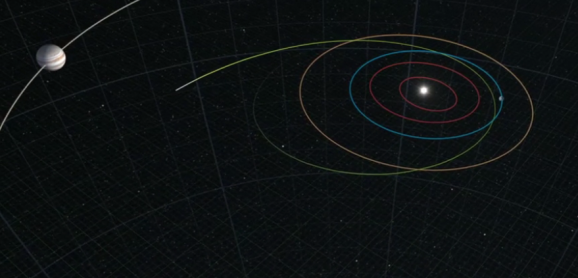Juno Will Use Earth For A Gravitational Slingshot As It Heads To Jupiter
This article is more than 2 years old
 Even though NASA has been crippled by the government shutdown, maintaining enough staff and operations to keep our ISS astronauts alive, its spacecraft continue on their missions, supporting the argument that robots and artificial intelligence are indeed smarter than humans. Today, spacecraft Juno will fly by Earth for a boost that will help it reach speeds of roughly 165,000 miles per hour as it heads toward Jupiter.
Even though NASA has been crippled by the government shutdown, maintaining enough staff and operations to keep our ISS astronauts alive, its spacecraft continue on their missions, supporting the argument that robots and artificial intelligence are indeed smarter than humans. Today, spacecraft Juno will fly by Earth for a boost that will help it reach speeds of roughly 165,000 miles per hour as it heads toward Jupiter.

Juno’s not traveling as the crow would fly to Jupiter. In fact, it’s been out there for two years already, but when it was launched, NASA didn’t have a rocket with enough boost to send Juno straight to Jupiter, so Juno has to take the scenic route instead. After the Atlas V rocket helped Juno escape the gravity of Earth, it was still under the influence of the sun’s gravitational pull. Juno went about 50 million miles into space, which is roughly as far as Mars’ orbit takes the red planet, before its engine thrust it back toward Earth, where it once again feels the pull of Earth’s gravity. Tonight, Juno will perform its scheduled flyby, hanging out with Earth for about 20 minutes at about 350 miles away before it uses Earth’s gravity to slingshot it toward Jupiter , this time with enough power to actually get there. The gravity assist provides “the energy of an extra rocket launch, without the extra rocket,” according to NASA.
Residents of South Africa will be able to see Juno (the rest of us can watch here), and Juno will be able to see Earth — the Juno cam will take advantage of some photo ops along the way. Amateur radio operators around the word have been invited to say hello to Juno via Morse Code. The Jet Propulsion Laboratory has coordinated the effort, and says that if enough ham radio operators join in, Juno’s plasma and radio wave technology will be able to receive the message. More importantly, the three LEGOs aboard Juno — the Roman god Jupiter, Juno (his wife), and Galileo — might just wave back.

The flyby also functions as a test run for the Juno team so they can perform instrument tests and operational procedures before Juno arrives at the giant planet. Luckily, they’re not furloughed, but NASA and Jet Propulsion Laboratory reporting on the flyby will be sparse. Juno will report its status weekly for the next three years and is scheduled to arrive at Jupiter in July 2016. Once there, it will explore the planet, attempting to uncover information about its origins, as well as clues about the beginnings of our solar system.












